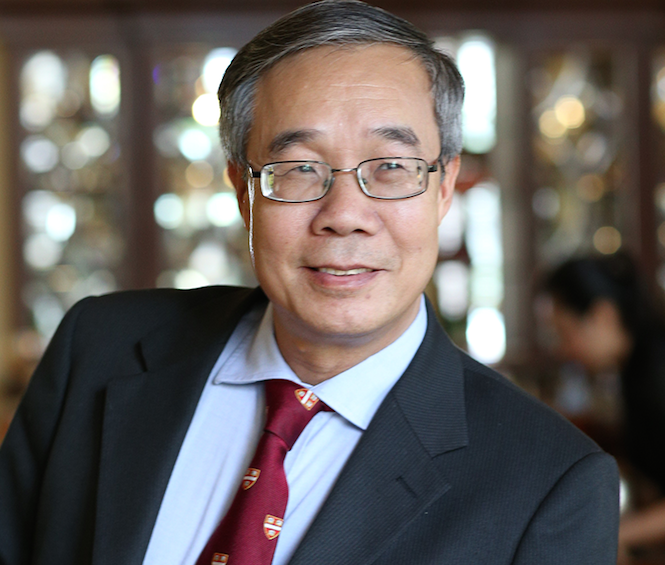
According to Quỳnh Trang, students should typically prepare to apply to about 10-15 schools because the acceptance rate at top universities is very low. During the research process, it’s advisable to divide the schools into three categories: dream schools, schools that are slightly above your reach but still attainable, and safety schools that you are likely to get into. Additionally, don’t overlook the Liberal Arts Colleges, as some of them are on par with Harvard and offer four-year programs, such as Williams College, Amherst College, and Wellesley College. These schools typically accept around 700 students each year.

Before applying, take the time to thoroughly research and avoid last-minute preparations. Also, don’t “put all your eggs in one basket.” The best time to choose schools is at the end of 11th grade.
SAT Scores: To get into the top 20 prestigious universities, you need to have an SAT score of 2200 or higher, and a GPA of 3.75 (equivalent to 8.0 – 9.0).
Essay Writing: This is extremely important because through the essays, the admissions committee can understand your character and personality.
Expert Trần Đức Cảnh emphasized: “Due to historical circumstances, Vietnam has created a great curiosity in the world, particularly among American intellectuals, most of whom have a favorable view of Vietnam. Don’t hesitate to express your thoughts or concerns about national issues, the difficulties of life, personal challenges, family, or the living environment of society. The impact of current events on your thoughts and spirit, and the difficult circumstances that have shaped your character will catch the reader’s attention.”
Extracurricular Activities: In Vietnam, students need to participate in extracurricular activities and gain leadership experience (this is what gives you your own identity). However, Mr. Trần Đức Cảnh shared: “I have read many applications from Asian students or Asian-American students, where the list of extracurricular activities is overwhelming. It’s hard to imagine how a student can be involved in so many sports, music, dance, and social charity programs, and still have time to study languages. Perhaps this is more of the parents’ wish rather than the student’s.”
Recommendation Letters: Choose about three teachers who are genuinely close to you. One of them could be someone outside of your teachers but who has a good relationship with you throughout your education, rather than those whose subjects you excel in but with whom you don’t feel comfortable. The letter should be concise and specific to clearly show the student’s personality, abilities, and potential. The letter should maintain sincerity, honesty, and objectivity for it to be considered valuable by the reader.
Interviews: Interviews can have a significant impact, especially for cases where the scores are close, providing additional evaluation of the individual. Typically, an interview lasts 45 minutes to an hour, with about 10 questions. In recent times, the weakest point of Vietnamese students is in interviews. They only answer what is asked, avoid eye contact, or look down, which reflects a lack of confidence and assertiveness. When Harvard admits a student, scores only tell part of the story; how you present yourself is what really matters. Harvard has rejected students with perfect scores or who were top of their class (or even the entire school) because they were not deemed a good fit or lacked expression of talent or potential.
For undergraduate or master’s programs at U.S. universities, you need to prepare between 25,000 – 60,000 USD/year. The major difference is the tuition fees of each school, while the cost of living doesn’t vary much. When you apply, most schools will send back a financial capability certification form, which will be used to evaluate your eligibility for scholarships. Typically, good schools may cover 50% of tuition and living expenses, leaving you to pay about 12,500 – 30,000 USD. You need to research the financial capabilities and conditions of each school through their websites or other available information. Mr. Cảnh noted: “Top schools compete very closely to attract good students. Harvard has a very high yield rate (81% in 2014) because of its reputation and financial support for students. They don’t focus on money; they care about whether you are admitted. If you have little money, you pay less; if you don’t have any, you may receive a full scholarship. Family financial reports must be truthful and consistent when you submit them to different schools.”
You can visit websites like sparknotes.com, quizlet.com, magoosh.com to find past exams, study materials, and information to help with test preparation. You should only take the SAT or ACT two or three times to avoid taking the exams too many times. The deadline for applications to top U.S. universities is January 1st, with some schools allowing until February 1st each year. You can submit your application early (in 12th grade), without waiting for your high school graduation exam results.
Recorded by Hương Xuân.